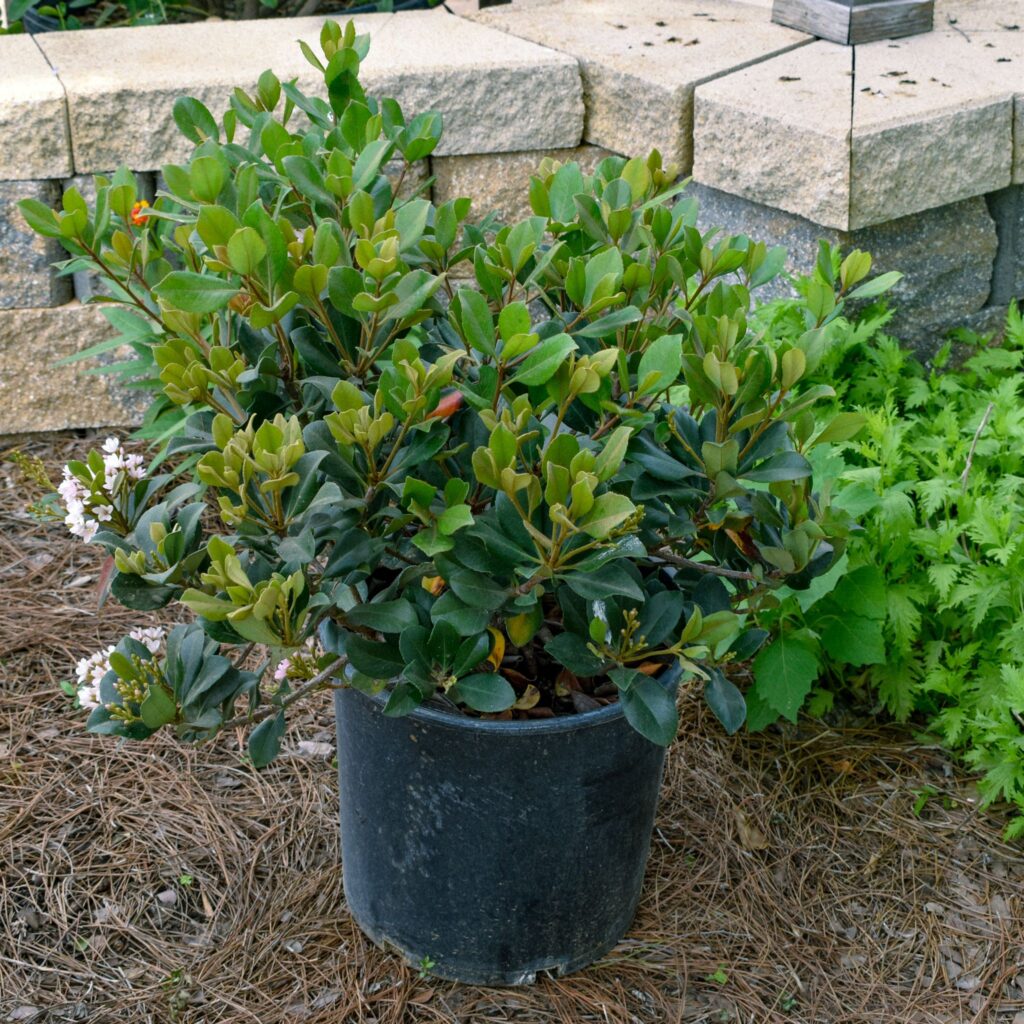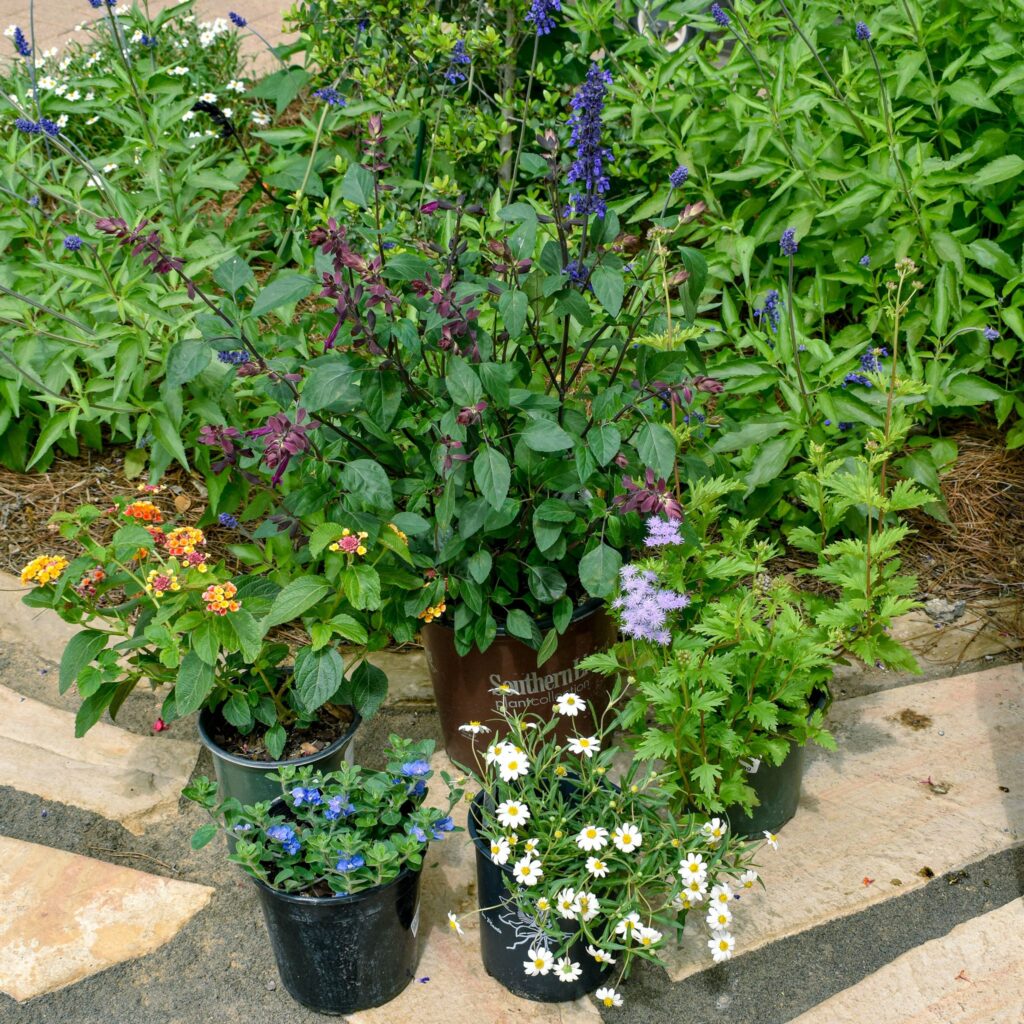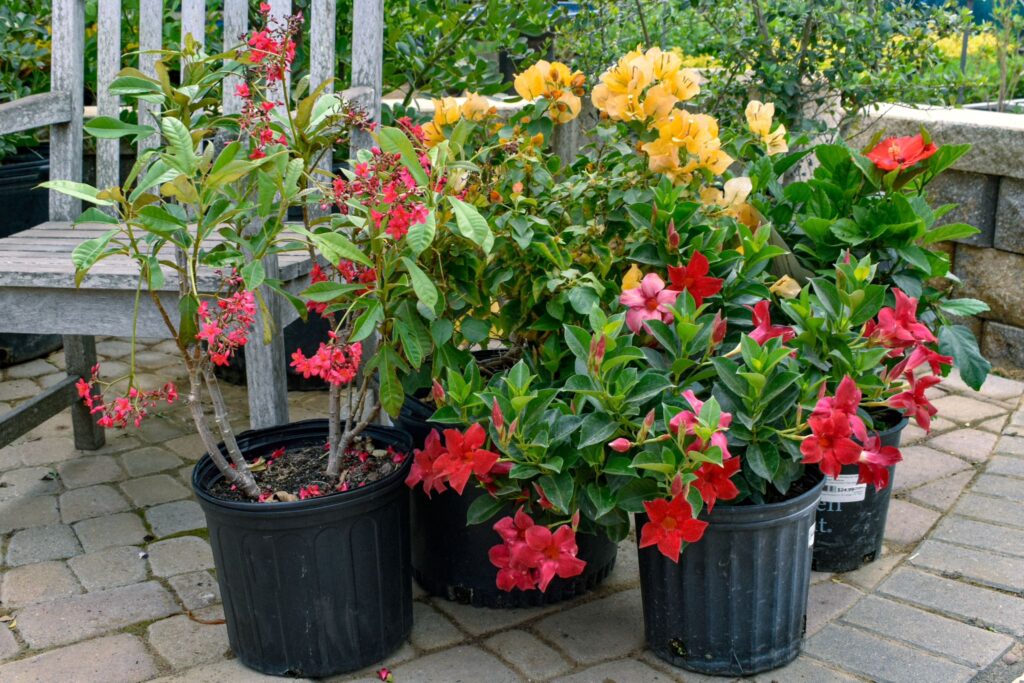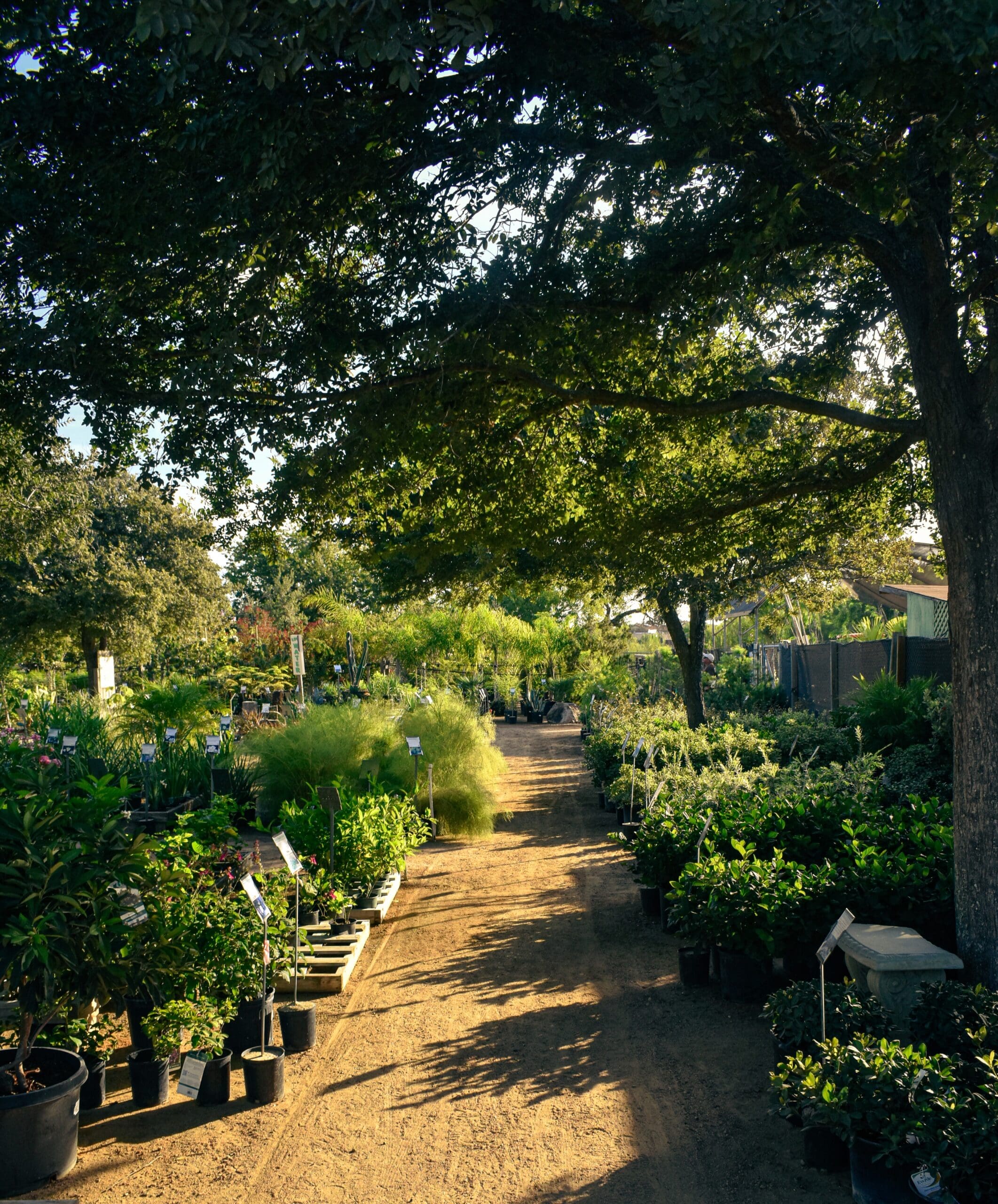We’ve been talking to lots of local gardeners who are totally rethinking their landscapes this year. After 2 cold winters in a row, you might be wanting more cold-tolerant plants. Understandable! We think that’s a great idea – start with some good bones, then add color and accents to suit your style. Here are some options to consider.
Small Trees Make Good Focal Points

Crops of blooming ornamental trees like Texas Mountain Laurel, Yaupon Holly, Vitex, and Redbud look fantastic this year. All of these will attract and support birds, as will other interesting native trees like Spiny Hackberry and Kidneywood. They can handle freezes and hot summer temps too. In nature, these are understory trees, so they can tolerate some shade. Look for a spot with good sun to partial shade where you’d like to create a focal point in your landscape. For example, plant a Yaupon Holly and add a birdbath where you can see it from your living room window and you’ll have live Mockingbird TV!
Add Structure with Cold-Hardy Shrubs

You can’t go wrong with cold-hardy, tried and true shrubs like Indian Hawthorn for creating structure in your landscape. Yes, they may still get a little browning on the tips after a freeze, but not severe damage. Shrubs frame the house and give you that classic evergreen look. Other classics like Wax Leaf Ligustrum, Viburnum, Pittosporum, and Dwarf Burford Holly are great for our area.
Bring the Butterflies with Cold-Tolerant Perennial Color

Blackfoot Daisy
Once you’ve got some good structure, you can make your landscape sing with blooming perennials! If you already had plants like Lantana, Salvias, Blue Daze, you’ve probably saw them look rough this Winter, then start to grow back rapidly this Spring. If you cut them back in the wintertime, they’ll look even better in Spring and Summer. Expect most blooming perennials to look their best for 2-3 years, sometimes longer. Keep in mind, if you’re planting to attract pollinators like hummingbirds, butterflies, and bees, plant several of the same plant in a group. For example, plant 6-8 Gregg’s Mistflower together in 1 bed to help butterflies easily find it. Mass-planting like this tends to look really nice to humans too.
Accent with Tropical Plants and Annual Color

If you’re adventurous, creating an all-tropical landscape can be lush and beautiful. Just know that you’ll likely need to replace plants if we get too cold, or wait a while until they grow back from the roots. Instead, you might consider building the bones of your landscape with cold-tolerant trees, shrubs, and perennials, then accenting with tropical plants. A Bougainvillea splash against a background of evergreen shrubs, or a small area full of philodendrons and Jatropha can create a tropical feel with less risk. And don’t forget about annual flowers! Pots or beds exploding with Zinnias, Begonias, Celosia, and Sweet Potato Vine will look amazing this season, then you get to pull them up and plant something new.



Lisa L says
The front of our house is becoming heavily shaded as our live oaks get bigger. The indian hawthorn we have isn’t thriving. Are any of the other shrubs you mentioned shade and cold tolerant?
james s gill says
Viburnum and pittosporum are more shade tolerant than hawthorn or ligustrum, and cold hardy to the mid 20’s or lower, if you promote dormancy by restricting watering starting in November. If the area gets no direct sun, aspidistra can be a good choice.